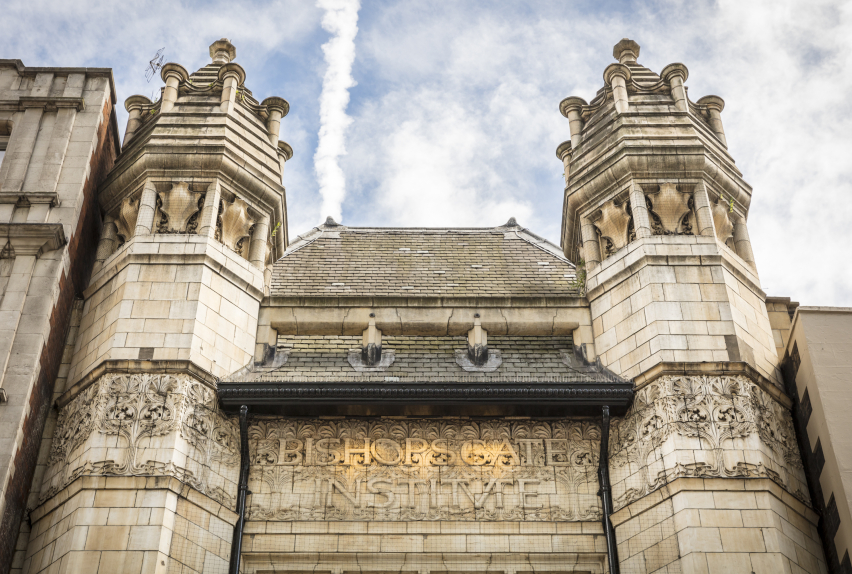The Rudi Inhelder Collection
News Story
From 21 July 2025
Visit the Institute and explore our free exhibition of images taken by Hanns Rudolf Inhelder
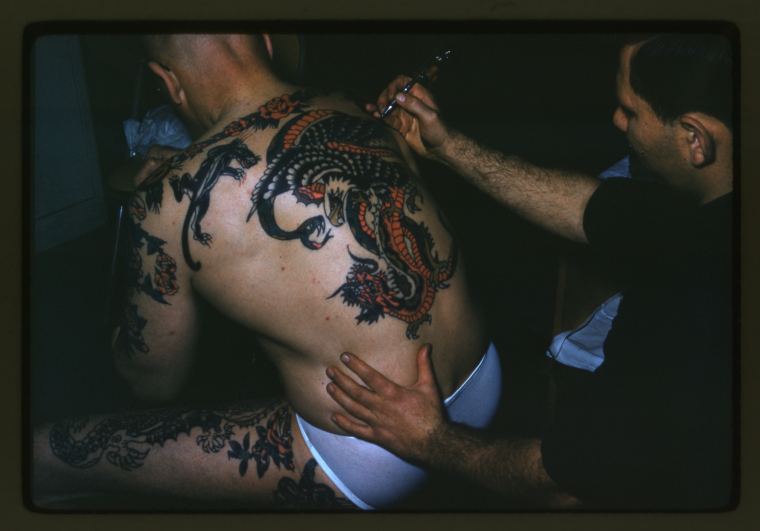
This exhibition shows for the first time photos that were taken by Hanns Rudolf Inhelder in the United States and Britain in the early 1960s.
Rudi (1929-2003) was a gay, Swiss physicist, working in the USA’s Cold War defence industry and an avid tattoo fan. He amassed what was at one point perhaps Europe’s largest collection of documents relating to international tattooing and was instrumental in creating the networks which would become the foundations of the modern-day tattoo industry.
He had become fascinated by tattoos and tattooing after reading a history of the industry, Pierced Hearts and True Love by Hanns Ebensten. When he came to London in 1955, it was Ebensten towards whom Rudi gravitated and who connected him with other tattoo enthusiasts and artists.
After travelling to America for work, Rudi longed for the camaraderie, connection, and companionship of tattooers and tattooed people that he had found in London. It was there, in 1963, that Rudi founded the groundbreaking Tattoo Club of America. Despite tattooing being illegal in New York at the time, the Club flourished and although ultimately short-lived, by 1964 it had 250 members, mostly men, and was regularly publishing tattoo newsletters.
As well as giving artists and fans the opportunity to meet, the Club, which collected information about interests from its members, also served as a clandestine match-making service for the many gay men, like Rudi, who wanted to meet other gay men and swap tattoo photos.
Image gallery
A gallery slider
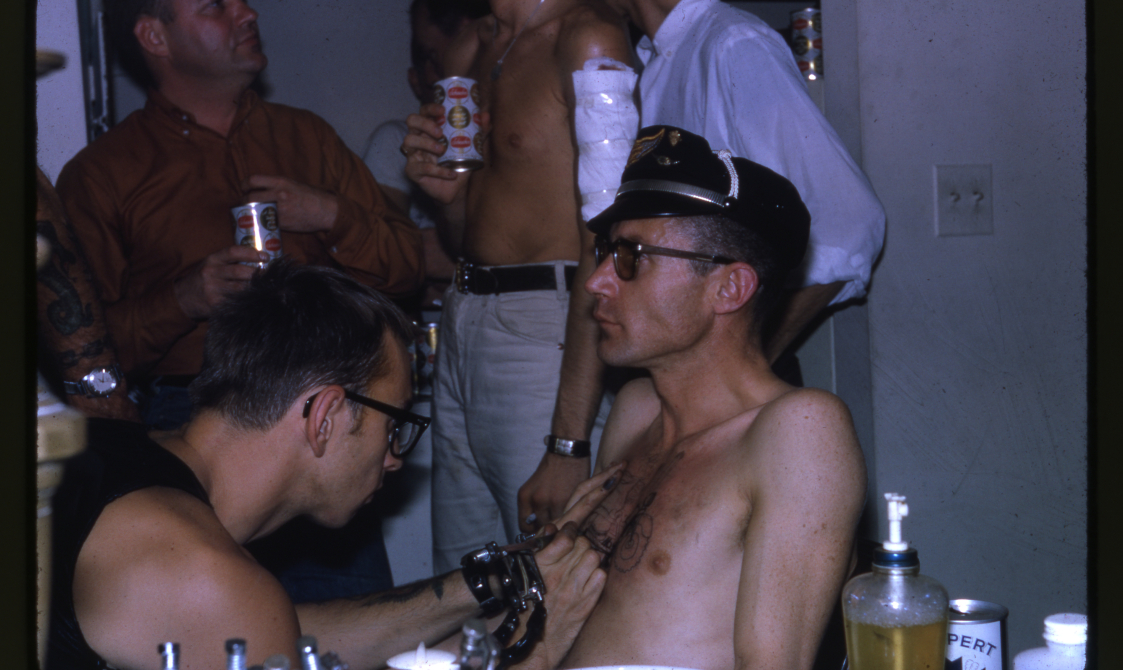
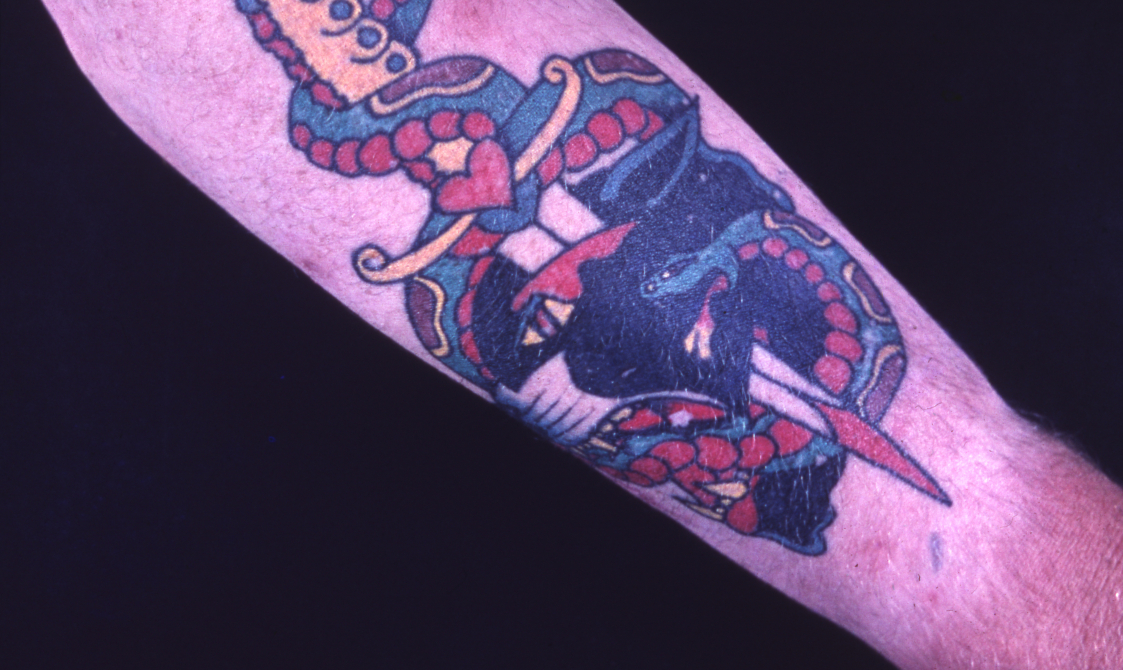
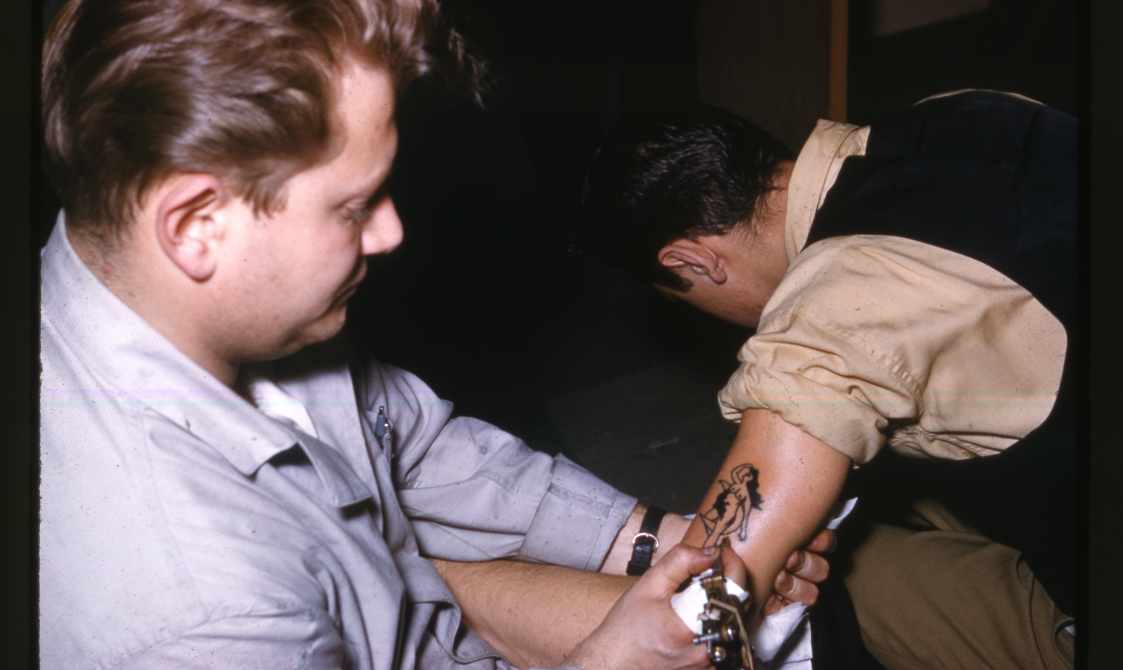
Rudi’s network encompassed the whole spectrum of the industry. Members spanned conservative, battle-hardened military tattooers such as Sailor Jerry in Hawaii, through to radical and queer experimenters like Roland Loomis, aka Fakir Musafar, the body modification pioneer from San Francisco. His innocently presented networking provided a way for queer men to meet likeminded others from outside their local towns in relative safety.
Though he wasn’t a tattoo artist, Rudi would become an absolute linchpin. He connected European, British, and American tattooing, and was instrumental in friendships and working relationships between mainstream and rather conservative tattooers and a diverse group of subcultural tattoo and body-piercing enthusiasts.
Much of Rudi’s vast collection was destroyed after his death in 2003 but Dr Matt Lodder at the University of Essex, working with Paul King, from the Body Piercing Archive in San Francisco, and Manfred Kohrs, of the German Tattoo History Institute, pieced together the surviving traces of Rudi’s influence and finally located what was left of Rudi’s collection to his family home in Switzerland. The numerous photos and business cards revealed the extent of his links. Those links underpinned the direction western tattooing would take over the 1960s, 70s, and 80s, and the interconnections between tattooing and the emergent body-piercing industry.
The remains of his collection is now housed here at Bishopsgate Institute, alongside that of his friend, the London tattooer Alan Oversby, aka Mr Sebastian.
Dr Matt Lodder
Donation
What We Do
